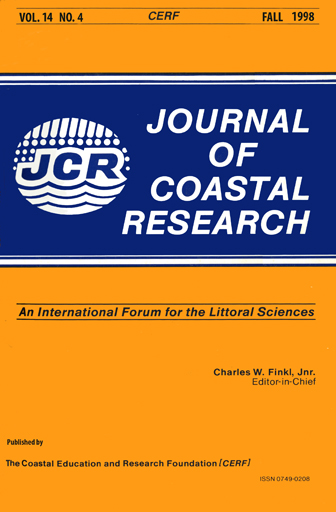Long-Term Beach Profile Variations Along the South Shore of Rhode Island, U.S.A.
Keywords:
Barrier beach, annual beach cycle, beach profiles, beach volume, New EnglandAbstract
The south shore of Rhode Island consists of eight microtidal, wave-dominated, sandy barriers separated by headlands of glacial till and outwash. Beach profiling was performed approximately bi-weekly in the fall, winter and spring and monthly during the summer at four barrier beach stations since 1962 and at an additional four stations since the mid-1970s. The profile data yield cross-sectional profiles and volumetric time-series plots which document the morphological and volumetric changes that occurred at these beaches. Time-series analysis of the profile-volume data reveals that an annual period is present and in-phase at all the profile stations. The annual cycle of high profile volume in the summer and low volume in the winter reflects onshore-offshore sediment transport and is related to the seasonal change in intensity and frequency of storms. Periods between 1.5 and 5 years in the profile-volume data from four stations are out-of-phase likely due to longshore transport of sediment. Long-period cycles (>9 years) are observed at the majority of the profile stations and may represent responses to variations in longshore sediment transport, sea level and climate.


